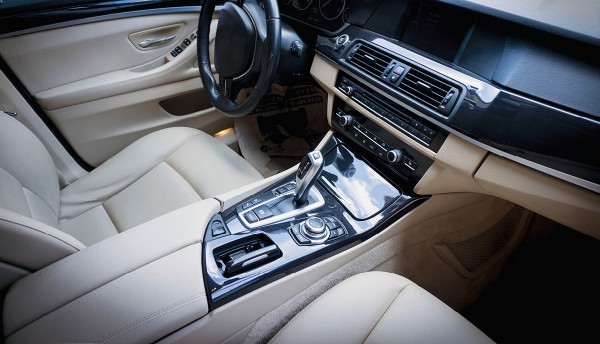
Automakers are choosing to assemble vehicles in Mexico because of the inexpensive labour costs and the willingness of the Mexican government to do what it takes to attract global manufacturers. Favorable trade agreements with several nations may have become the most critical factor in increased movement to the region.
The outlook for the Mexican supplier industry looks strong. With Mexico now a favoured destination for many US-based and Japanese suppliers, more new component production plants are expected to be established in the country. Furthermore, the aftermarket has been continuously increasing since 2009, when Mexico imposed new duties and requirements on the import of used vehicles. Additionally, the parts equipment and first and second-tier components from the US will experience an increase in exports as auto production increases in Mexico.
Component suppliers in Mexico are increasingly locating production facilities at supplier campuses within close proximity to major automakers’ plants. Both Ford and Toyota are setting up supplier campuses in Mexico with some 35 component manufacturers locating operations at Ford’s Hermosillo plant and many suppliers also setting up production facilities close to its Tijuana factory in Baja California.
There is also growing pressure on component manufacturers in the US to match the prices offered by their counterparts based in China. This is leading many small or medium-sized suppliers that are unwilling or unable to shift production to China to move output to Mexico.
Pressure from tie one customers for smaller suppliers and some lower tier companies to move to Mexico will increase.Business opportunities and incentives are helping, but investing in Mexico remains a tricky decision for some as there are the great number of security issues related to the Mexican drug wars that will likely deter some lower tier suppliers and add a great deal to the cost of any investment there.
This year has seen a number of tier-1 suppliers either opening plants or starting construction projects there:
|
OPENED |
|
|
|
|
Supplier |
Sector |
Location |
Other |
|
Hella |
Lighting |
Irapuato |
Its fifth in Mexico, the plant is expected to produce 1.2 million headlamps and 2.4 million rear lamps annually for markets in North and South America. The investment is expected to create 1,500 new jobs over the medium term. |
|
Faurecia, Howa |
Joint-venture – Interior systems for Nissan |
Puebla |
The JV will start supplying door panels and interior parts for Nissan Navarra 4x4 pickup truck, which is sold in North America as Nissan Frontier. The contract is expected to begin from September 2014. |
|
Johnson Controls |
Seating foam |
Queretaro |
The plant will supply seating foams to OEMs in central Mexico. Currently employs 150 people. |
|
Bosch |
Software development and engineering services centre |
Guadalajara |
Development and validation of hardware and software for the electronic control units used in vehicles. |
|
Faurecia |
Seat cover and trim technology |
Santa Fe |
The new centre employs 20 engineers and technicians. The new laboratory will enable Faurecia Automotive Seating to better serve its customer plants in Mexico. The company counts Volkswagen, Nissan and Chrysler among its customers in Mexico. |
|
Denso
|
Alternators, HVAC |
Silao |
USD108.4 million investment. The facility will build alternators, radiators and washer systems, and heating, ventilation, and air-conditioning units. The company already produces instrument clusters, climate control panels, and engine control components in Mexico. |
|
JTEKT |
EPS |
San Luis Potsi |
USD90m in a manufacturing facility for electric power steerings (EPS). Operations start by the end of 2015 |
|
UNDER CONSTRUCTION |
|
|
|
|
Supplier |
Sector |
Location |
Other |
|
Bridgestone
|
Polyurethane foam for automotive seats |
Guanajuato |
The plant will produce foam for approximately 360,000 vehicles per year. Production is expected to begin in the first half of 2015. |
|
Hitachi Automotive |
Pistons for automotive parts and aluminium die casts |
Lerma City |
Fifth plant for Hitachi Automotive Systems Group within Mexico. Production is expected to start in May 2015 |
|
Asahi Glass (AGC) |
Automotive glass |
San Luis Potosí |
The new plant will manufacture laminated glass for about 750,000 vehicles per year. |
Driving this production growth will be Japanese, North American and European manufacturers, who are expanding their manufacturing presence in Mexico. At the end of 2013, Mexico was the eighth largest vehicle manufacturer globally after China, United States, Japan, Germany, South Korea, India and Brazil. In 2013, LV production saw an improvement of 1.7% year-on-year to 2.92 million units, breaking a new output record. Mexico accounted for about 18% of North American automotive production in 2013; this share is expected to increase to 25% by 2020. Moreover, in 2013, Mexico was the fourth largest LV exporter in the world
IHS expects Mexico to become the largest vehicle exporter to the United States, overtaking Canada and Japan, in the next few years. The four biggest vehicle exporters from the country were GM, Ford, Nissan and Volkswagen. Should the pace of investment in capacity building continue in Mexico, the country is expected to overtake Brazil in vehicle production in next few years – Brazil produced 3.46 million LVs in 2013.
Mexico is also a main supplier of auto parts to the US market. Following their OEM customers, the auto parts makers in Mexico, some 300 in number, are also intensifying their manufacturing operations in the country. Over the years, Mexico’s liberal trade environment has seen almost all major foreign suppliers set up a base in the country. This has led to a cut-throat competition for Mexico’s home-grown suppliers. IHS believes that the business environment is only becoming tougher for domestic companies, and it will be a herculean task for any new independent domestic supplier to establish a strong foothold in the country.








